
Antioxidant BHT 264
CAS:128-37-0
Purity:99%
Contact Now
We will contact you as soon as possible
Your Location:Home >Products >Cosmetics and Food Chemicals >57-00-1
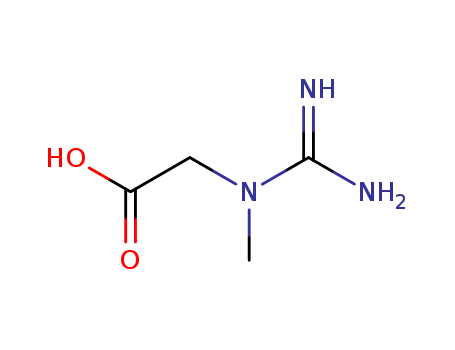

Product Details
|
Physical and Chemical Properties |
It is prismatic crystals (containing one crystal water molecule) with the melting point being 303 ℃ and the relative density of 1.33. It is soluble in boiling water and 98% acetic acid, slightly soluble in ethanol but insoluble in diethyl ether and butyrate. It can react with inorganic acid to obtain creatinine and co-heat with total soda lime to generate methylamine. It can be used to generate ammonia when being subject to azeotrope with potassium hydroxide and can react with potassium permanganate to generate methyl guanidine oxalic acid and guanidine; at room temperature, its aqueous solution can react with mercuric acetate role to generate guanidino glyoxylic acid, finally generating oxalic acid and guanidine In the reaction of the self-digestion in the muscle juice or organ extract, it can be converted to creatinine. |
|
Production method |
1. For taking lime nitrogen as raw materials for preparing creatine, there are three different process routes: Lime nitrogen has direct reaction with the aqueous solution of sodium sarcosine to generate creatine. Lime nitrogen is reacted with the methanol solution pre-saturated with dry hydrogen chloride gas to generate O-methylisourea hydrochloride which is further subject to reaction with sarcosine to generate creatine. Upon the condition of passing air, lime nitrogen was reacted with aqueous hydrochloric acid to generate chlorinated formamidine chloride which further reacts with sarcosine sodium to generate creatine. 2. Cyanamide is reacted with chloroacetic acid, methylamine to generate creatine monohydrate. 3. Take thiourea and dimethyl sulfate as raw materials to generate S-methylisothiourea sulfate which then have reaction with sarcosine, sodium sarcosine or potassium sarcosine to generate creatine. 4. Take urea and dimethyl sulfate as raw materials to generate O-methyl isourea sulfate which then reacts with sodium sarcosine to generate creatine monohydrate. Figure 1 The reaction formula for production of creatine Operation method: add 3.3 mol of urea and 6 mL 50% H2SO4 to a 500 mL four-necked flask equipped with a stirrer, a thermometer, a dropping funnel and a condenser; heat to 40 ℃, add drop wise of 3 mol dimethyl sulfate under stirring for 3 h; during the addition of raw materials, the temperature should be maintained at less than 70 ℃; after the completion of adding the material, stir for 2h about 70 ℃, and cool to obtain 561.8 g of O-methyl isourea sulfate. Add 61.7 of 36% aqueous solution of sodium sarcosinate to a 500 mL four-necked flask equipped with a stirrer, a thermometer, a dropping funnel and a condenser, use 30% HCl to adjust the pH to about 11.0, and then add drop wise at 20 ℃ of 50 g of O-methyl isourea sulfate within 2 h; during the process of adding, drop wise, use 25% NaOH solution to adjust the pH and maintain the pH at about 11.0, after the addition was complete, stirring was continued at 40 ℃ for 2 h, and then cool the mixture at 0 ~5℃ for 2h and filter out the formed colorless crystals. Use 2 × 15 mL of ice water to wash the filter cake to generate crude creatine monohydrate. Put the crude product into beaker, add water of 7 to 8 times the amount of crude product, heat to dissolve all the crude product, have liquid be subject to slow cooling at room temperature, crystallized, filter off the crystals, dry at a temperature below 50 ℃ to obtain the finished product of creatine monohydrate . |
|
Pharmacological effects |
1. Increase the water content of muscle cells: During the initial stage of using creatine, you can feel obviously that the muscles can become larger and stronger. This is because creatine leads to that the body's muscle cells store a relatively large amount of water; and when all the muscle cells absorb large amounts of water and get increased volume, the muscle will certainly become more full, visible. 2. Help the muscle cells to store energy: Human muscle fiber contains two different forms of creatine: non-bonded creatine and phosphate-containing creatine phosphate; among them, creatine phosphate accounts for about two-thirds of the total creatine content. When muscle gets contraction for exercise, the body will use a compound called ATP as the energy source. Unfortunately, the body's muscle cells can only support the ATP energy which is enough for only less than ten seconds rapid contraction. Therefore, more ATP must be produced in order to maintain continuous movement. At this time, the creatine phosphate stored in muscle will sacrifice their phosphoric acid group for biosynthesis of ATP again. Therefore, if the muscles contain more creatine, the muscle will have greater potential for exert its strength. In addition, the supplement of the creatine can also help the exhausted muscles cells to rejuvenate. This is because when the muscle ATP energy is depleted, the body can use glycolysis pathway to produce lactic acid. When the body undergoes fierce exercise, a large number of lactic acid can be produced to make the muscles get soreness and fatigue; at this time if the muscle can store relative large amount of creatine phosphate for providing more ATP, the body will reduce the lactic acid manufacturing and reduce fatigue of muscle cells so that we can exercise more durable and more explosive. 3. Increase the biosynthesis of proteins: The uptake of creatine makes the body be able to use more protein for muscle growth. Moreover, the two proteins in the muscle structure; actin and myosin, is exactly the main component to lead to muscle fiber contraction and movement. Therefore, if we can supplement sufficient amount of creatine for our bodies, our body can reduce the energy consumed for protein synthesis so that we can have more energy to synthesize large amount of actin and myosin cells, therefore, our muscle will certainly become stronger and more powerful. |
|
Side Effects |
1. Byproducts Low-purity creatine not only has no apparent effect, but also is harmful to the human body. The major harmful substance is a derivatives called dicyandiamide. It will increase the burden of renal excretion. In the product of creatine of 99.99% purity, the dicyandiamide content is less than 20PPM. 2. Energy Source The movement of the human muscles relies on the energy decomposed by adenosine triphosphate (ATP]. In high-intensity exercise, ATP will be totally depleted within a few seconds exploded, meaning it can only provide a few seconds of energy. In the aerobic exercise, it can be synthesized from the aerobic decomposition of carbohydrates and fats. But in anaerobic exercise, due to the lack of oxygen, creatine began to be involved to energy metabolism. It can combine with phosphoric acid to synthesize creatine phosphate (CP) and quickly replenish ATP. Theoretically, the more the creatine is stored, the more the synthesis of CP will be and the longer time the ATP can be supplied. In that case, the muscle can persist for a longer time at high-intensity exercise. In the recovering period, the synthesis of creatine still relies on carbohydrates for aerobic energy supplying. Therefore, the intake of carbohydrates should not be too small. Otherwise, after the decomposition of creatine, it can’t be synthesized and can’t supply the energy in the next training. 3. Danger Because the creatine can quickly supplement energy, there may be overtraining phenomenon during the exercise. |
|
Biochem/physiol Actions |
Creatine is a nitrogenous compound that acts as a high-energy reservoir for the rapid regeneration of ATP. Approximately 95% of creatine is found in skeletal muscle, primarily as phosphocreatine. Creatine can be acquired through dietary consumption or formed from L-arginine, glycine, and L-methionine in a multi-step reaction that occurs in the kidneys and liver. Creatine is then transported to muscle tissue. Creatine supplementation is used for the enhancement of sports performance, primarily by increasing muscle mass. Creatine is also being investigated as a treatment of neuromuscular diseases, where it may aid in neuroprotection and by improving the cellular bioenergetic state. |
|
Purification Methods |
Likely impurities are creatinine and other guanidino compounds. It crystallises from the minimum volume of boiling H2O as the monohydrate. The hydrate is also obtained by dissolving in H2O and adding Me2CO. Drying under vacuum over P2O5 or drying at 100o gives the anhydrous base. The anhydrous base can be obtained also by dissolving the hydrate in H2O, seeding with the anhydrous base and cooling in ice. A m of 258 -268o(dec) was reported. The picrate crystallises from 17 parts of H2O with m of 218-220o(dec). [King J Chem Soc 2377 1930, Hoffmann et al. J Am Chem Soc 58 1730 1936, Mendel & Hodgkin Acta Cryst 7 443 1954, Greenstein & Winitz The Chemistry of the Amino Acids J. Wiley, Vol 3 p 2750 1961, Beilstein 4 III 1170, 4 IV 2425.] |
|
Uses and Mechanism of Action |
Creatine supplementation in vegetarians increased total creatine, creatine, and phosphocreatine concentrations in vastus lateralis and gastrocnemius muscle, plasma, and red blood cells, often to levels greater than omnivores. Creatine supplementation increased lean tissue mass, type II fiber area, insulin-like growth factor-1, muscular strength, muscular endurance, Wingate mean power output, and brain function (memory and intelligence) in vegetarian participants. Creatine mechanisms of action involve rapid energy provision by transferring the N-phosphoryl group from phosphorylcreatine (PCr) to adenosine diphosphate (ADP), thus resynthesizing adenosine triphosphate (ATP) and spatial energy buffering, transferring energy from the mitochondria to the cytosol. Creatine is synthesized endogenously from arginine and glycine by arginine glycine amidinotransferase (AGAT) to guanidinoacetate (GAA). The GAA is then methylated by the enzyme guanidinoacetate N-methyltransferase (GAMT) with S-adenosyl methionine (SAMe) to form creatine. The kidney, pancreas, liver, and some regions in the brain contain AGAT with most GAA formed in the kidney and converted by GMAT to creatine in the liver. Endogenous creatine synthesis provides about half of the daily need for creatine. The remaining amount of creatine needed to maintain normal tissue levels of creatine is obtained in the diet primarily from red meat and fish or dietary supplements. Brain creatine content has been suggested to be affected by other factors, such as aging. |
|
General description |
Creatine is a kind of natural nutrients in presented in the human body and can also be synthesize through arginine, glycine, and methionine in the liver, kidney and pancreas: in the presence of the catalysis of the arginine/glycine transamidinase in the kidney, the amidino group of the arginine can be transferred to the amino group of the glycine, generating glycocyamine. Then in the liver, with the catalysis of the glycocyamine methyltransferase, the methyl group of the S-adenosylmethionine can be transferred to the glycocyamine, generating creatine; it can increase the water content of the muscle cells, help the muscle cells to store energy, increase the protein synthesis and some other fundamental functions; wherein the artificially synthetic creatine can be used as the nutritional supplements for promoting the adaptation of skeletal muscle on fierce exercise and fighting against the excessive fatigue of individual in weakness; it can also be used for making the drugs for the treatment of heart disease and respiratory insufficiency; it can be used for making the pharmaceutical formulation containing human growth hormones; it can be applied to the compound health food, with anti-aging and physical power-recovering effect. |
InChI:InChI=1/C4H9N3O2/c1-7(4(5)6)2-3(8)9/h2H2,1H3,(H3,5,6)(H,8,9)
-
-
A real-time kinase assay method based on...
Protein arginine phosphorylation (pArg) ...
The invention discloses a synthetic meth...
The present invention provides amide-pro...
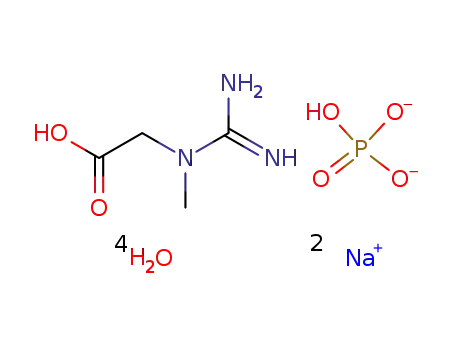
disodium creatine phosphate tetrahydrate

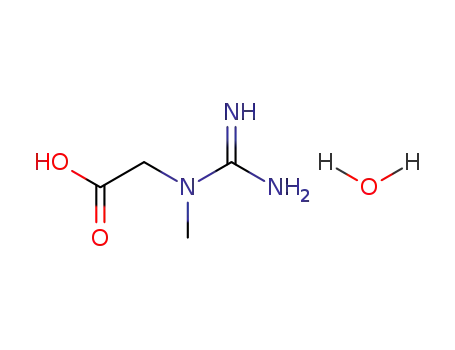
creatine monohydrate powder

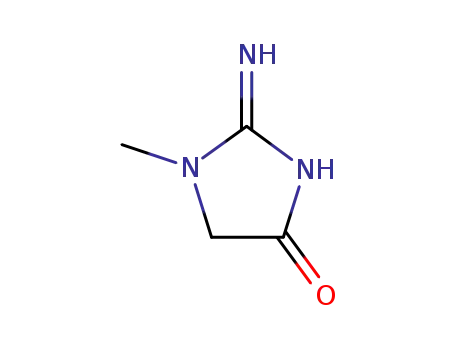
creatinine

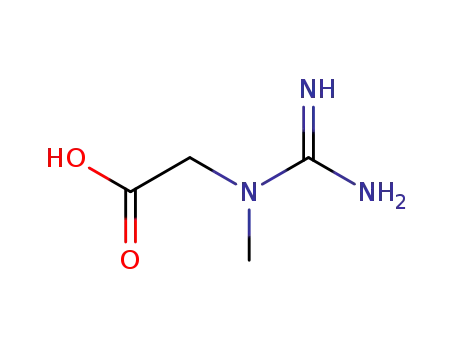
Creatinine
| Conditions | Yield |
|---|---|
|
|
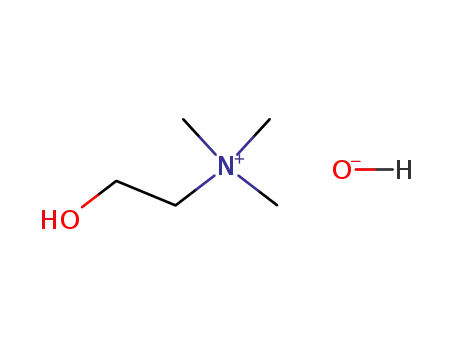
cholin hydroxide


creatinine


Creatinine
| Conditions | Yield |
|---|---|
|
Bei der Einw.von Gemischen aus Gehirn- und Leberbrei von Hunden oder Ratten in Gegenwart von Arginin oder Harnstoff;
|
|
|
Bei der Einw.von Gemischen aus Muskel- und Leberbrei von Hunden oder Ratten in Gegenwart von Arginin oder Harnstoff;
|
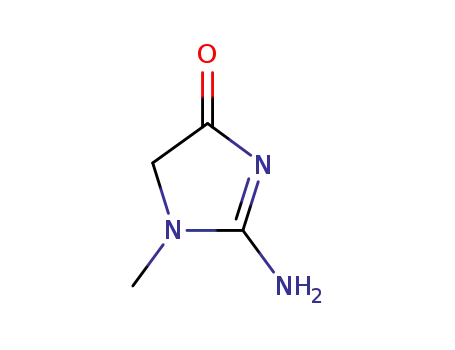
Creatinine

creatinine
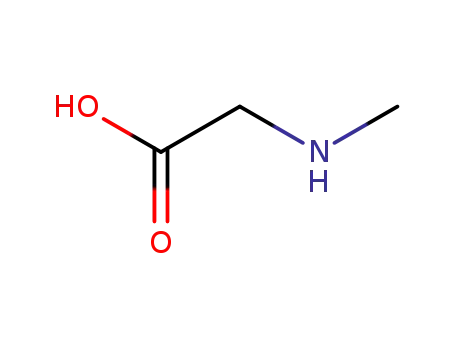
sarcosine
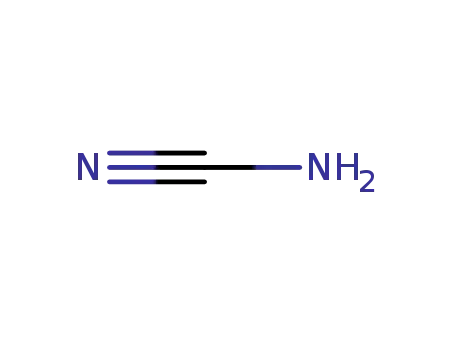
CYANAMID
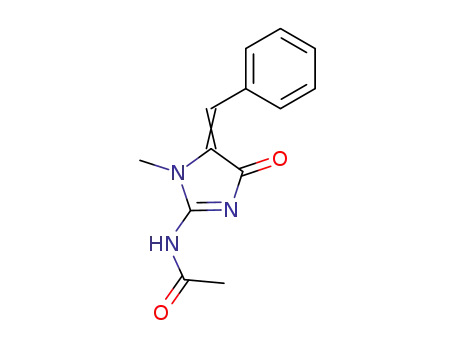
N-[5-benzylidene-1-methyl-4-oxo-4,5-dihydro-1H-imidazol-2-yl]acetamide

creatinine
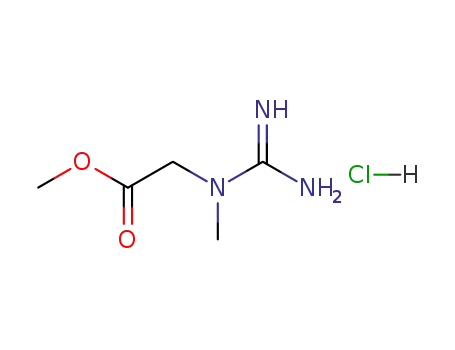
N-carbamimidoyl-N-methyl-glycine methyl ester; hydrochloride

2-Amino-3-methylimidazo[4,5-f]quinoline